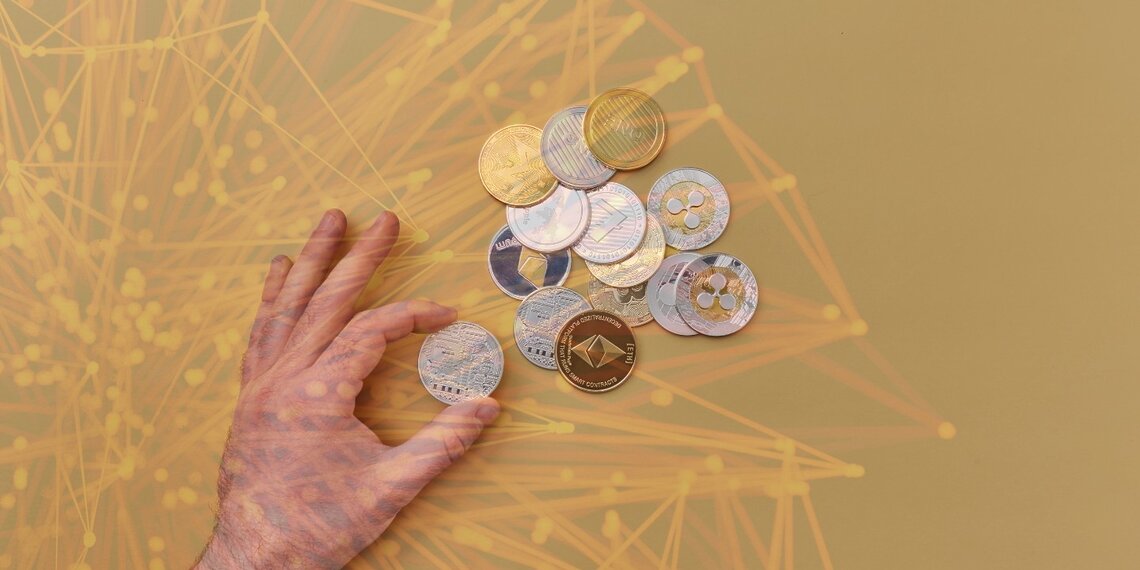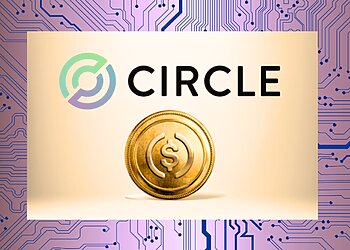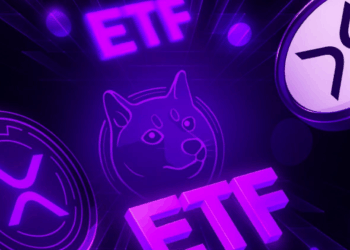The word “Altcoin” is a combination of “alternative” and “coin.” Simply put, any cryptocurrency that is not Bitcoin (BTC) is considered an altcoin. Bitcoin was the first cryptocurrency, and all others that came after it are “alternatives” to Bitcoin. They were created to offer improvements, address specific limitations of Bitcoin, or serve entirely different purposes.
A Brief History of Altcoins
Bitcoin launched in 2009, revolutionizing the concept of digital currency. While groundbreaking, it had its limitations, such as transaction speed and energy consumption for mining. This led developers to explore new possibilities and create alternative cryptocurrencies.
- 2011: The First Altcoins Emerge. The year 2011 saw the birth of the first notable altcoins. Litecoin (LTC) is often cited as the first altcoin, forked from Bitcoin’s blockchain. It aimed for faster transaction times and a different mining algorithm (Scrypt instead of Bitcoin’s SHA-256) to be more accessible for regular computers. Namecoin (NMC), also launched in 2011, introduced the concept of decentralized domain names.
- 2015: The Rise of Ethereum. A significant turning point came in 2015 with the launch of Ethereum (ETH). Ethereum wasn’t just another cryptocurrency; it introduced a programmable blockchain that enabled “smart contracts” and decentralized applications (dApps). This opened up a whole new world of possibilities beyond just digital cash, paving the way for decentralized finance (DeFi), NFTs, and much more.
- Continued Innovation: Since then, thousands of altcoins have been created, each with unique features, technologies, and use cases. This continuous innovation has shaped the diverse and evolving cryptocurrency landscape we see today.
Types of Altcoins
Altcoins can be categorized based on their underlying technology, purpose, or consensus mechanism:
- Mining-based Altcoins: Similar to Bitcoin, these altcoins use a “proof-of-work” (PoW) consensus mechanism, where powerful computers (miners) solve complex mathematical problems to verify transactions and add new blocks to the blockchain. Examples include Litecoin (LTC) and Dogecoin (DOGE) (though Dogecoin also falls under meme coins).
- Staking-based Altcoins: These altcoins use a “proof-of-stake” (PoS) consensus mechanism. Instead of mining, users “stake” their coins (lock them up) to validate transactions and secure the network. This method is generally more energy-efficient. Ethereum (ETH) has transitioned to a PoS system, and Cardano (ADA) and Solana (SOL) are prominent examples.
- Stablecoins: Designed to maintain a stable value, typically by being pegged to a real-world asset like the U.S. dollar, gold, or a basket of currencies. They aim to reduce the extreme volatility often associated with cryptocurrencies. Examples include Tether (USDT) and USD Coin (USDC). They are commonly used for transferring value and as a safe haven during market downturns.
- Utility Tokens: These tokens provide access to a specific product or service within a blockchain ecosystem. For example, they might be used to pay for fees, access features, or participate in a decentralized application. Ethereum’s Ether (ETH) can be considered a utility token as it powers transactions on the Ethereum network. Binance Coin (BNB) is another example, used for discounted trading fees on the Binance exchange and within its ecosystem.
- Governance Tokens: These tokens give their holders voting rights on proposals and decisions related to the development and future of a decentralized project or protocol. This allows for community-driven governance. Uniswap (UNI) is a well-known governance token.
- Privacy Coins: These altcoins focus on enhancing anonymity and privacy for transactions, making it difficult to trace the sender, receiver, or amount of a transaction. Examples include Monero (XMR) and Zcash (ZEC).
- Meme Coins: These cryptocurrencies are often created as a joke or parody, inspired by internet memes. They typically gain popularity through social media and community hype rather than groundbreaking technology. Dogecoin (DOGE) and Shiba Inu (SHIB) are the most famous examples.
- Platform Tokens: These are native tokens of blockchain platforms that support the creation and operation of decentralized applications (dApps) and smart contracts. Ethereum, Solana, and Cardano all have their own platform tokens (ETH, SOL, ADA, respectively).
Pros and Cons of Altcoins
Like any investment, altcoins come with their own set of advantages and disadvantages:
Pros
- Innovation and Specialization: Altcoins often bring new features, technologies, and use cases that Bitcoin doesn’t offer. They can be designed for specific industries, privacy, scalability, or interoperability between different blockchains.
- Higher Potential Returns: Because many altcoins have smaller market capitalizations than Bitcoin, they have more room for explosive growth. A successful altcoin project can see significant price appreciation.
- Diversification: Investing in a variety of altcoins can help diversify a cryptocurrency portfolio, reducing reliance on Bitcoin’s performance alone.
- Community and Development: Many altcoins have active developer communities and dedicated user bases that contribute to their growth and adoption.
Cons
- Higher Volatility and Risk: Altcoins, especially those with smaller market caps, tend to be far more volatile than Bitcoin. Their prices can fluctuate wildly, leading to substantial gains but also significant losses.
- Less Established: Many altcoin projects are relatively new and may not have the same level of security, liquidity, or widespread adoption as Bitcoin. There’s a higher risk of projects failing or being scams.
- Liquidity Issues: Some smaller altcoins may have low trading volume, making it difficult to buy or sell them quickly without significantly impacting their price.
- Complexity: The sheer number and variety of altcoins can be overwhelming for beginners, requiring extensive research to understand their technology, use cases, and potential.
How to Buy Altcoins
Buying altcoins typically involves these steps:
- Choose a Reputable Cryptocurrency Exchange: You’ll need to use a cryptocurrency exchange that supports the altcoins you’re interested in. Popular exchanges include Binance, Coinbase, Kraken, Bybit, and KuCoin. Look for exchanges with good security, reasonable fees, and a wide selection of altcoins.
- Create an Account: Sign up for an account on your chosen exchange. This usually involves providing personal information and completing a “Know Your Customer” (KYC) verification process.
- Deposit Funds: Fund your account with fiat currency (e.g., USD, EUR) using methods like bank transfers, debit/credit cards, or other payment options supported by the exchange. Some exchanges may require you to first buy Bitcoin or Ethereum and then trade those for your desired altcoin.
- Research the Altcoin: Before buying, thoroughly research the altcoin. Understand its purpose, technology, team, whitepaper, and community. Assess its market cap, trading volume, and historical price movements.
- Place an Order: Once your account is funded, navigate to the trading section of the exchange. Search for the altcoin’s trading pair (e.g., ETH/USD, SOL/BTC). You can place different types of orders:
- Market Order: Buys or sells at the current market price.
- Limit Order: Buys or sells at a specific price you set.
- Store Your Altcoins (Optional but Recommended): While you can leave your altcoins on the exchange, it’s generally safer to transfer them to a personal cryptocurrency wallet for which you control the private keys.
- Hot Wallets: Connected to the internet (e.g., software wallets, exchange wallets).
- Cold Wallets: Offline storage (e.g., hardware wallets like Ledger or Trezor, paper wallets) offering higher security.
My Take
Altcoins represent the vast and innovative landscape of cryptocurrencies beyond Bitcoin. They offer diverse solutions, improve upon existing blockchain technologies, and open up new possibilities in areas like decentralized finance, gaming, and digital identity. While they present exciting opportunities for growth and technological advancement, their higher volatility and evolving nature necessitate careful research and a clear understanding of the associated risks. As the crypto market continues to mature, altcoins will undoubtedly play a crucial role in shaping its future.
It’s important to note that cryptocurrency remains an unregulated digital asset, not recognized as legal tender, and is subject to market risks. The information provided should not be considered financial or trading advice. CryptoNow holds no responsibility for any investment decisions made based on the content of this article.










